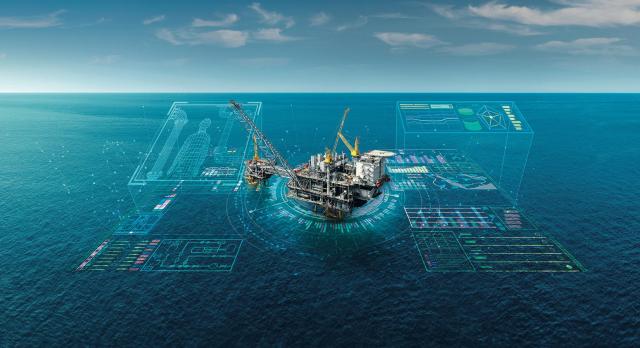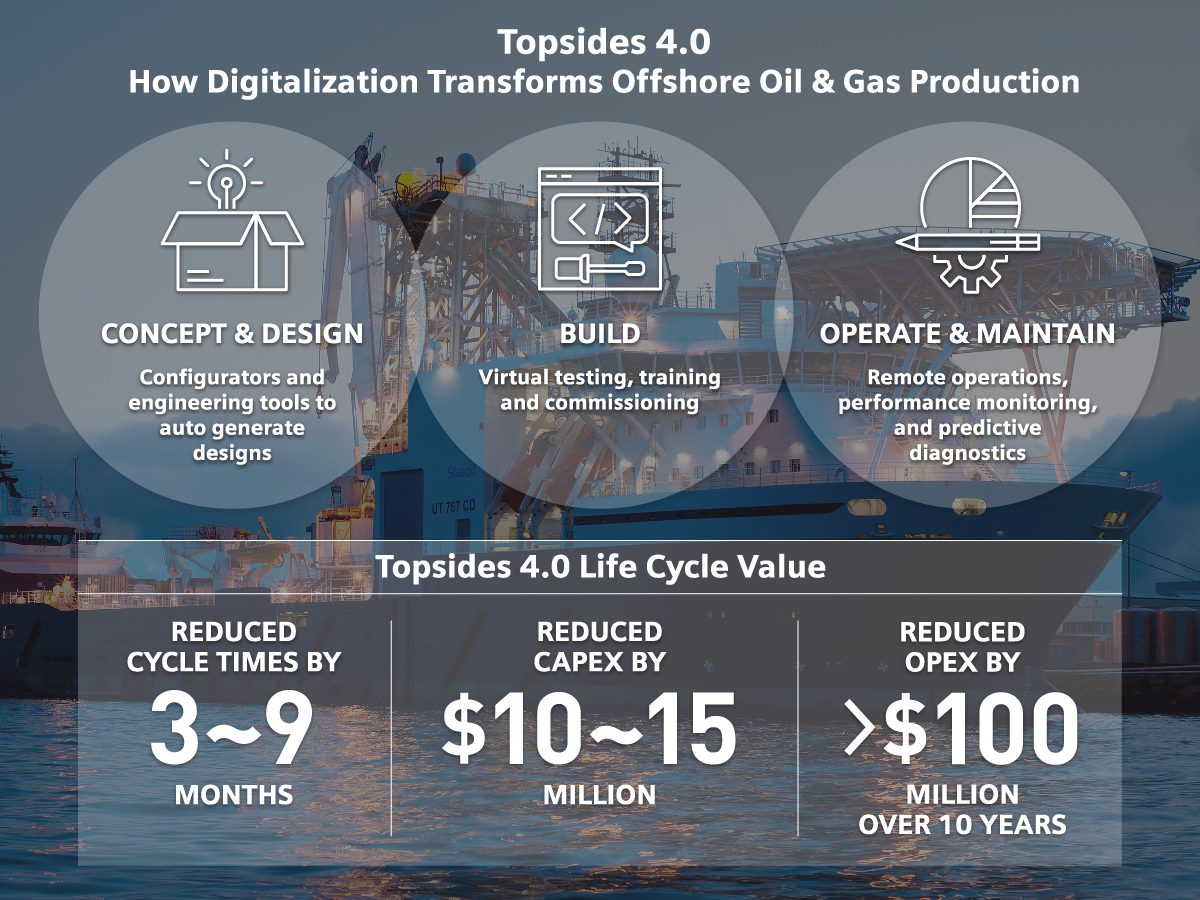
When a leading offshore producer publicly announces its goal of pushing North Sea production costs below $7 a barrel, high-cost operators should take note. After all, their investors certainly will. While the producer’s strategy is an all-out adoption of digitalization for new, low-manned platforms, existing E&P operations can benefit from much greater digitalization, as well.
Getting to first oil faster, saving millions and months of time
Digitalization of a new offshore facility can cut its CAPEX by $10–15 million and OPEX by $100 million over 10 years. It can shorten project delivery cycles by 3–9 months, helping to minimize start-up risk and time to first oil and gas. Even more, it can reduce offshore labor needs by half or more, improving safety. Brownfield upgrades can boost operating performance, visibility, safety, reliability, and asset utilization, while lowering maintenance and other operating costs.
But, given the complexities of these facilities, how can offshore operators put digitalization to work in a strategic, comprehensive way, without adding even more complexity from a patchwork of digital solutions from different vendors? Good question. Big question. And one that Siemens can answer.

Siemens Topsides 4.0, an integrated, lifecycle approach to digitalization
With decades of offshore E&P domain experience around the world, Siemens has introduced Topsides 4.0 for greenfield and brownfield facilities. This is a fully integrated, digital lifecycle approach to the design, fabrication, deployment, commissioning, and operation of rotating equipment and electrical and automation systems, all linked with highly secure communications.
From the FEED stage forward, Topsides 4.0 spawns a “digital twin” of a physical facility that functions alongside with continual data updates in near real-time for the former’s entire life span. As a virtual replica in software, the digital twin enables digital project management, testing, and commissioning, saving cycle times and expensive change costs. Once in production, the digital twin then enables operators to conduct remote control and monitoring, condition-based maintenance, and asset utilization, employing artificial intelligence and machine learning as needed.
Digitalization, an E&P competitive edge today — a competitive requirement tomorrow
Long embraced by aerospace, auto, pharmaceutical, semiconductor industries, among many others, digitalization no longer provides them with a competitive advantage, but is required to stay competitive. It’s not long before that will be the case in the E&P industry, too.
To learn more, visit the Siemens Digitalization for Oil and Gas web page.

